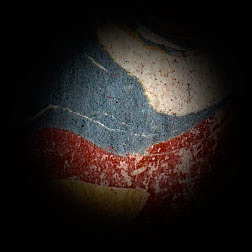Our Goals...
Thoroughly investigate the genetic diversity of Iberian aurochs to compare with contemporary aurochs from North/Central Europe, i.e. a diachronic ancient DNA study to contrast Glacial vs. postGlacial populations.
Assess if Iberian aurochs were genetically distinct from those found in other southern European regions, or if they represented homogenous populations dispersed throughout the Mediterranean. Italian predomesticate aurochs carried T-mitochondrial DNA lineages distinct from their North/Central European counterparts that belong to haplogroups P and E.
Investigate occurrence of local domestication underlying the vast genetic diversity found in Iberian cattle. Genetic data provide evidence for secondary domestication of aurochs and/or sporadic interbreeding of wild and domestic cattle in other southern European regions. Zooarchaeological data appears to support such findings, since bones of intermediate size have been well characterized through osteometry. A phylochronological approach will be used to compare genetic affinities among Iberian cattle and their local wild counterparts, in contrast with ancestral populations originating from the domestication centre (e.g. Near East).
Evaluate the legacy of Iberian aurochs in the current genetic stock of Iberian breeds, i.e. to determine the degree and timescale of admixture between wild and domestic cattle.
Apply nextgeneration sequencing to design a refined set of molecular markers (to rule out ascertainment bias) that captures temporal/geographical changes in population dynamics of peripheral native cattle from Iberia/North Africa.
Describe some phenotypic traits of ancient cattle (gender, body size, coat colour, meat and/or milk traits) and its variation over time. We will investigate animal improvement in association with husbandry practices imposed by human cultures that inhabited Iberia. Next generation sequencing, which allow for high coverage will be used to investigate the variation of genomic regions associated with phenotypic traits. Results from genetic analyses will be integrated with zooarchaeological information/historical records.
